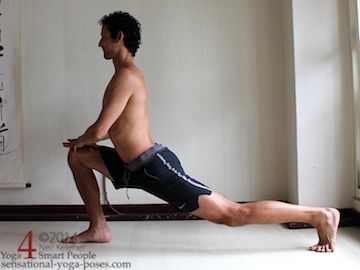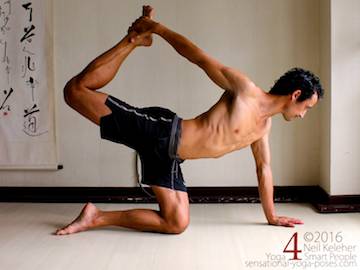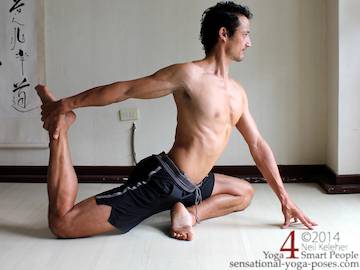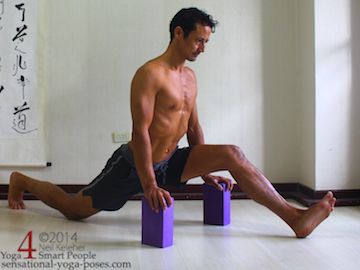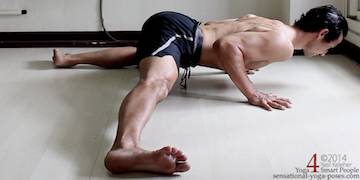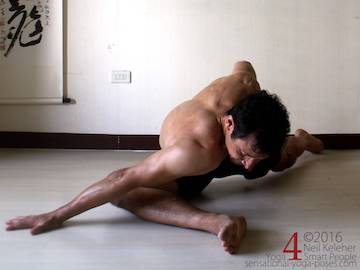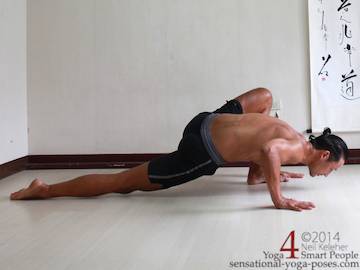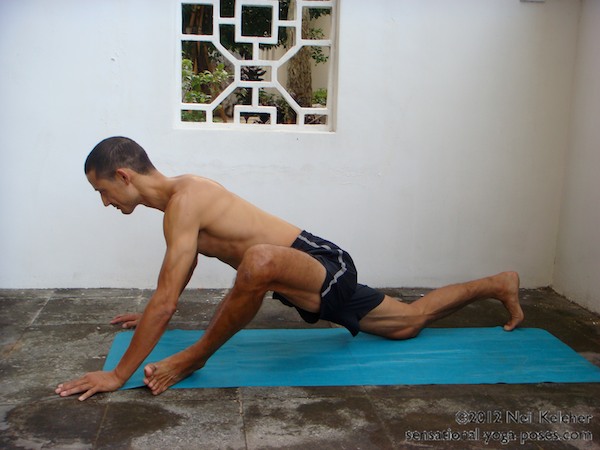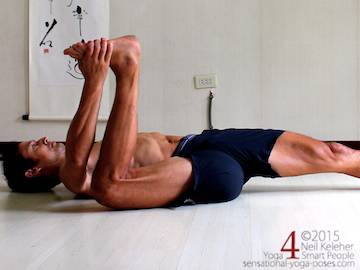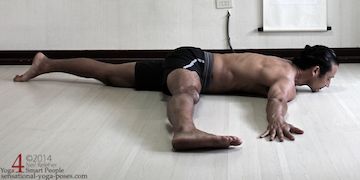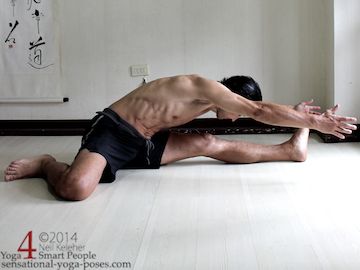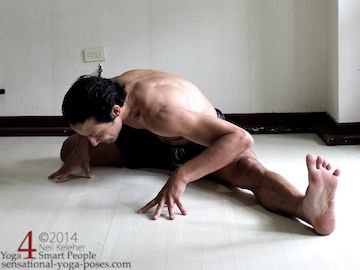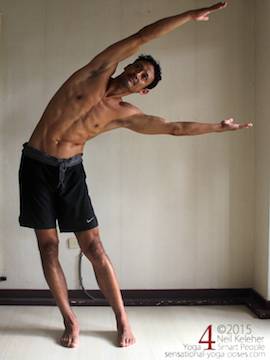The hip extensors are the muscles that work on the back of the hip joint. While the hamstrings work on the back of the hip joint, they also work on the back of the knee joint. These hip extensor stretches tend to focus on the single joint hip extensors.
A simple stretch for the hip extensors is low lunge. In this case the hip extensors of the front leg are stretched. This pose could also be also be used as a gentle stretch for the hip flexors of the rear leg.
You could also use low lunge to strengthen your shoulders and arms, for example by bending your arms push-up style to sink your chest.
A fun variation of low lunge is with the front foot turned out as in this glute stretch. It stretches the side of the hip quite strongly. Other glute stretches can be done while sitting or lying on the back.
In most cases, glute stretches work on the back of the hip with the leg externally rotated. This can also target the piriformis.
The hip flexors are the muscles that work on the front of the hip joint.
In High lunge you can stretch the hip flexors of the back leg by sinking your pelvis down.
In extended cat pose, you can stretch the hip flexor of the lifted leg by lifting the leg as high as possible. Keep the knee of the lifted leg pointing downwards as you do.
In upward facing dog you can give the hip flexors a stretch by pressing your hips downwards (and pulling them forwards) while keeping your knees straight and lifted.
In upright pigeon pose, you can bend the back knee, and grab the foot with the same side hand (or opposite side hand). In both this pose and extended cat pose (above), work at keeping your spinal erectors active. Additionally, activate the butt muscle of the leg you are grabbing.
In front to back the splits, work on the hip flexor of the back leg by sinking your hips down. To deepen the hip flexor stretch, keep your torso upright. Additionally, work at keeping your spinal erectors and back leg gluteus maximus both active.
The adductors are the muscles along the inner thigh. They generally work to pull the leg inwards and so to stretch them you can move the leg outwards.
Note that even though these muscles extend down the length of the inner thigh, they mainly work on the hip joint. Exceptions to this are muscles like the gracilis and sartorius, which though colocated with the adductors, cross the knee joint and so aren't, strictly speaking, hip muscles.
(If you do want to stretch these muscles at the same time as you stretch the inner thigh hip muscles, then make your knee strong as well as straight.)
A basic pose for working on inner thigh flexibility is the half side split. There are other adductor stretches including the prone inner thigh stretch shown below and variations of hurdlers stretch.
The abductors (which move the legs outwards and generally include gluteus medius and gluteus minimus) are situated between the top of the pelvis and the top of the thigh bone at the side of the pelvis.
Fibers of the gluteus maximus that attach to the Iliotibial tract as well as the tensor fascia latae muscle which also attach to this band of connective tissue are both positioned close to the gluteus minimus and medius.
To stretch these muscles along with the pure hip adductors, again it can help to make the knee(s) both straight and actively stable.
In Pigeon pose glute stretch you can stretch the outer hip muscles one leg at a time.
Likewise with standing side bend
Another way to stretch the lateral glutes is to stand with the legs crossed, both knees straight and then bend over. Push the hips to one side of the other to increase the stretch.
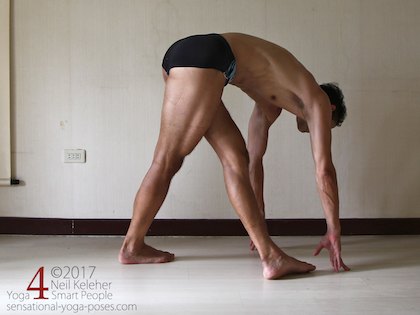
Weight Even
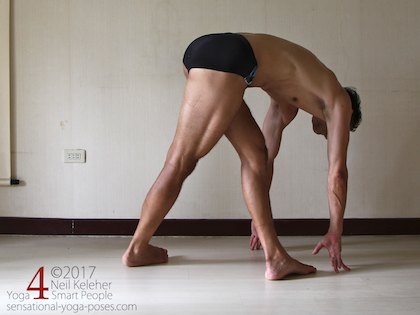
Weight towards front leg foot
You can also do this outer hip stretch with one leg (the front one) bent.
For extra fun and excitement, and to exercise the adductors of the straight leg, try lifting the straight leg foot (not shown).
You can do this with hands on the floor (which can be helpful when getting into the pose) or with hands lifted.
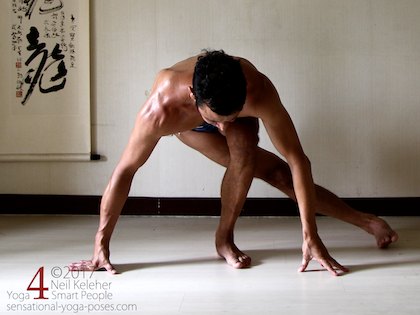
Cross leg lunge
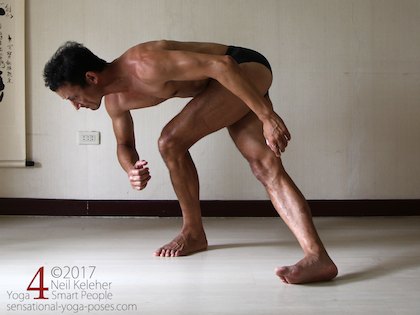
Cross leg lunge with hands lifted
